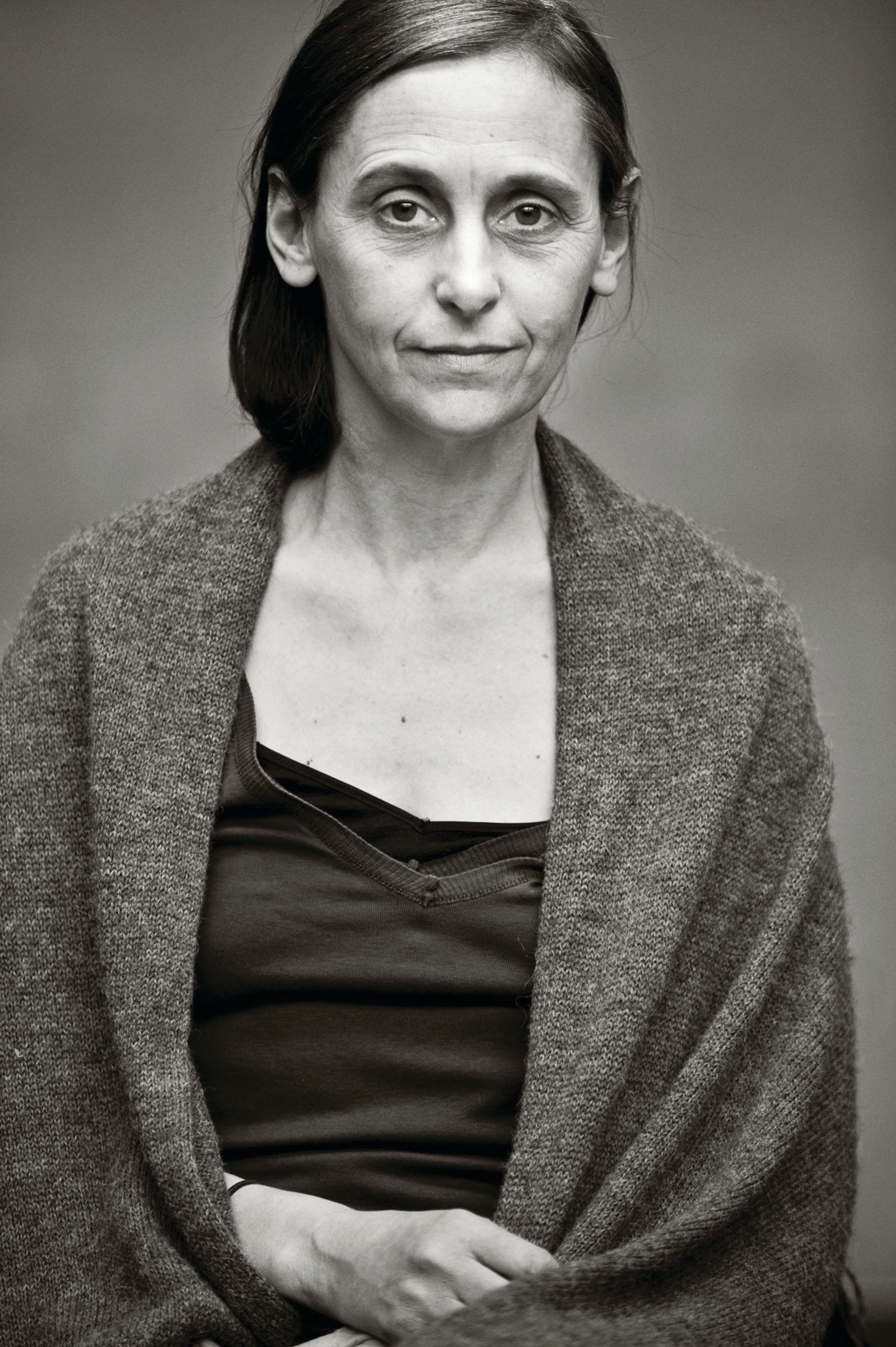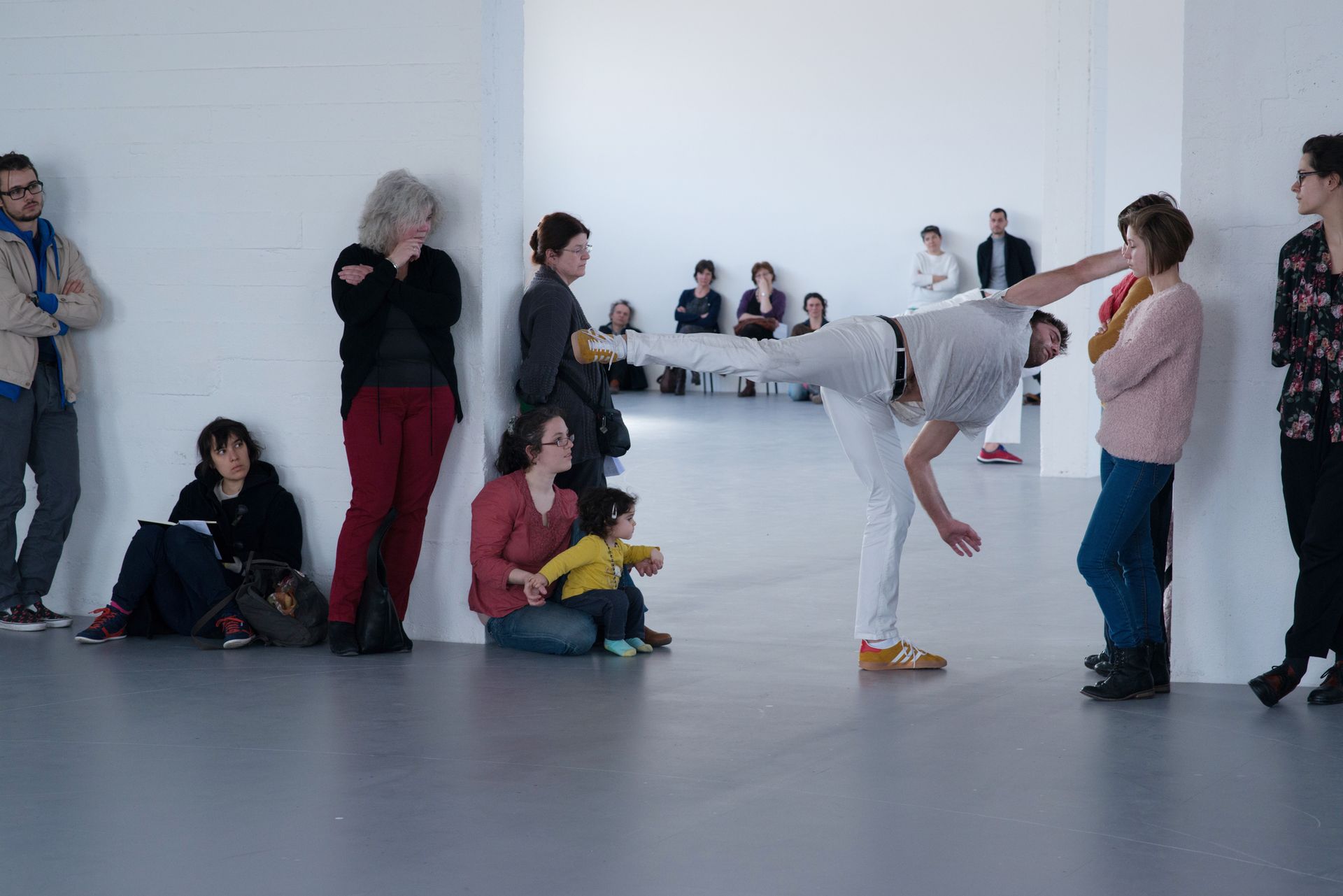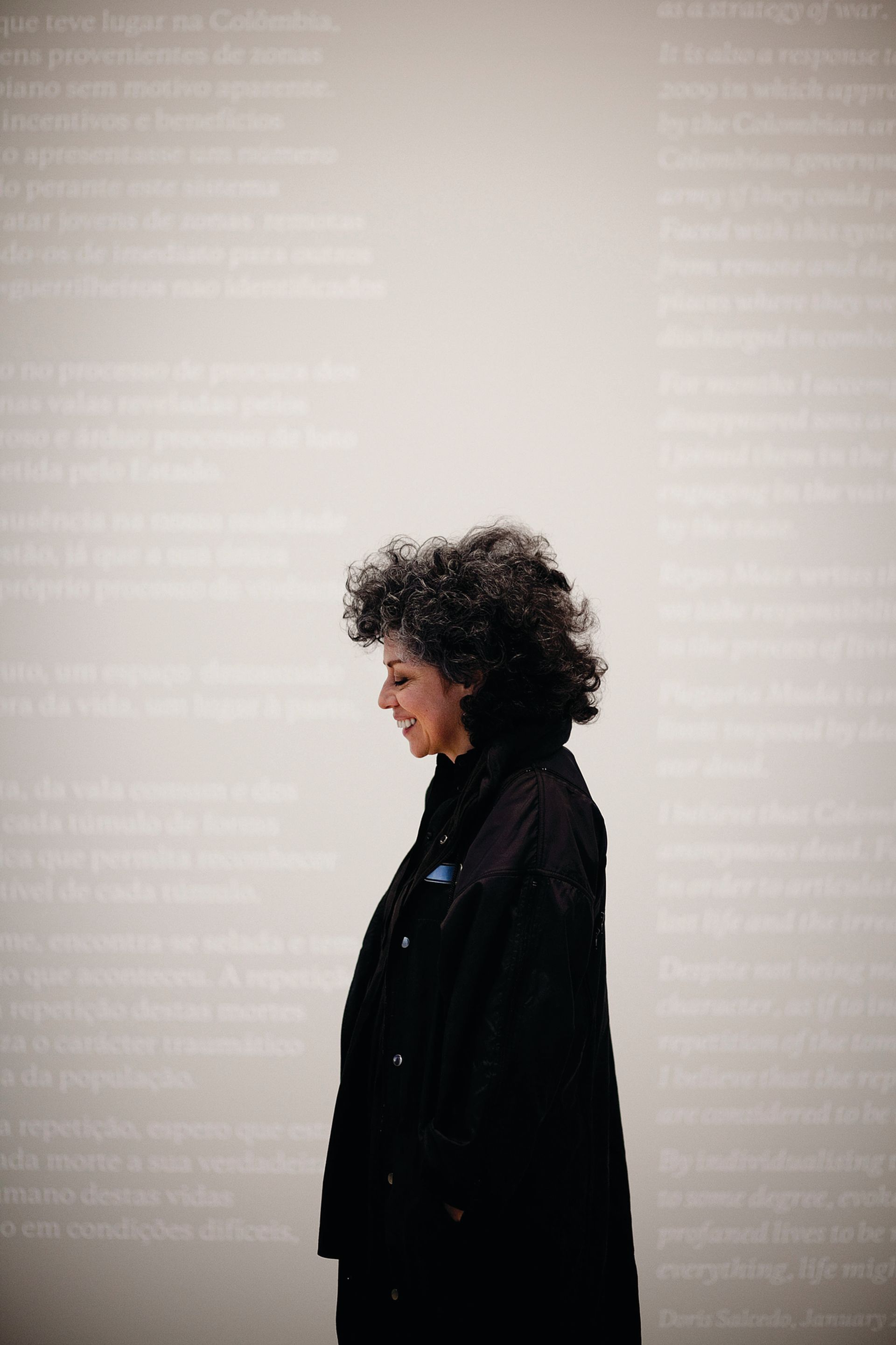Out of the black box, into the light

The Belgian choreographer Anne Teresa de Keersmaeker performed Fase, Four Movements to the Music of Steve Reich at the opening of Tate Modern's Tanks in 2012. In July, she returns to Tate Modern, where her company Rosas will perform the piece Work/Travail/Arbeid in the Turbine Hall (8-10 July).
"The project, Work/Travail/Arbeid, was an answer to a question from Wiels, the contemporary art centre in Brussels. They asked me to make a choreography, not just for the exhibition space, but as an exhibition. The starting point was a piece of music, Vortex Temporum, by the French composer Gérard Grisey, which I created for a black box theatre. I rechoreographed and rethought both the spatial and the time conditions of the piece for the museum.
In a black box, you have a beginning and an end—a condensed time. With the stage, you have frontality: there is the very notion of distance and the performers on stage, and those who watch are in a fixed position. In the museum, space and time become liquid. People have a collective experience, but every spectator organises his or her time individually.

The movement of the audience can interfere with the choreography and change the perception of it, especially because one of the basic principles of the choreographic vocabulary in Work/Travail/Arbeid is walking. There is a big difference in coming from a dark, black space into daylight in the Turbine Hall. Where normally, in the theatre, I am a dancer and you look at me; in the museum, I look at you and you look back—it goes in two directions.
For 35 years, I performed exclusively in black box theatres. When I opened the Tanks and the year before performed at MoMA, it was the first step in breaking that frontality, of experiencing that proximity. Through the experience of performing in the Tanks I realised you could access a different public.
Fase is based on the music of Steve Reich, a key figure in Minimal music, and the performance itself was an answer to the musical concept of Minimalism. Yet Fase has something maximalistic in its physical intensity. For people who are familiar with Minimal art, as well as people who don’t know anything about it, or anything about choreography, to experience it as a live performance in a museum space was really powerful.
The Turbine Hall, with the opening of the extension, will be both a space in itself and a space in between—between the old Tate Modern and the new galleries. The movement of people crossing the space will definitely inform the perception of the movement in the choreography.
The Turbine Hall is huge vertically; it is like an open-air indoor space. Because of its size, the human figure in it is small, so as a spectator you can perceive the work from a big distance, but you can come very close. It is a very peculiar space—a public space for collective experience, just as a theatre is, but crucially different."
Cracking open colliding histories

Salcedo's Turbine Hall work is the only one with a permanent presence: the "scar" from where the crack was filled with concrete
"The great achievement of the Turbine Hall is that is has managed to become a truly public space, in the complete sense of the term. It is a meeting ground where ideas and experiences can be shared and created, a space that people have reclaimed as their own.
Making Shibboleth was an opportunity to dialogue with the architecture, the history of the building, the history of the city. It was important to me that the Turbine Hall was not a boring, white, neutral space. It is a crossing point, a space that’s charged, and that’s what I love about it—that it is charged with all these histories that collide, intersect and interact with the work one places there.
This space brings forth or amplifies the meaning of the work that it houses. I am a political artist, so for me all these histories were essential in the making of Shibboleth.
The fact that some previous pieces in the series were spectacular and had a lighter meaning has left a mark in the way that some members of the public interact with the work—that it had to be physical, that it was not enough to contemplate the piece and think about it, or dialogue with it. Each piece carries with it a suggestion or an invitation to the viewer to communicate with the piece in a unique manner. Some people accept this invitation and are willing to give the piece a moment of communal excitement or contemplation. Others just don’t. And this is the beauty of art: some people accept it and some people reject it. A work of art can, and should, have as many interpretations as the number of viewers that approach it."

